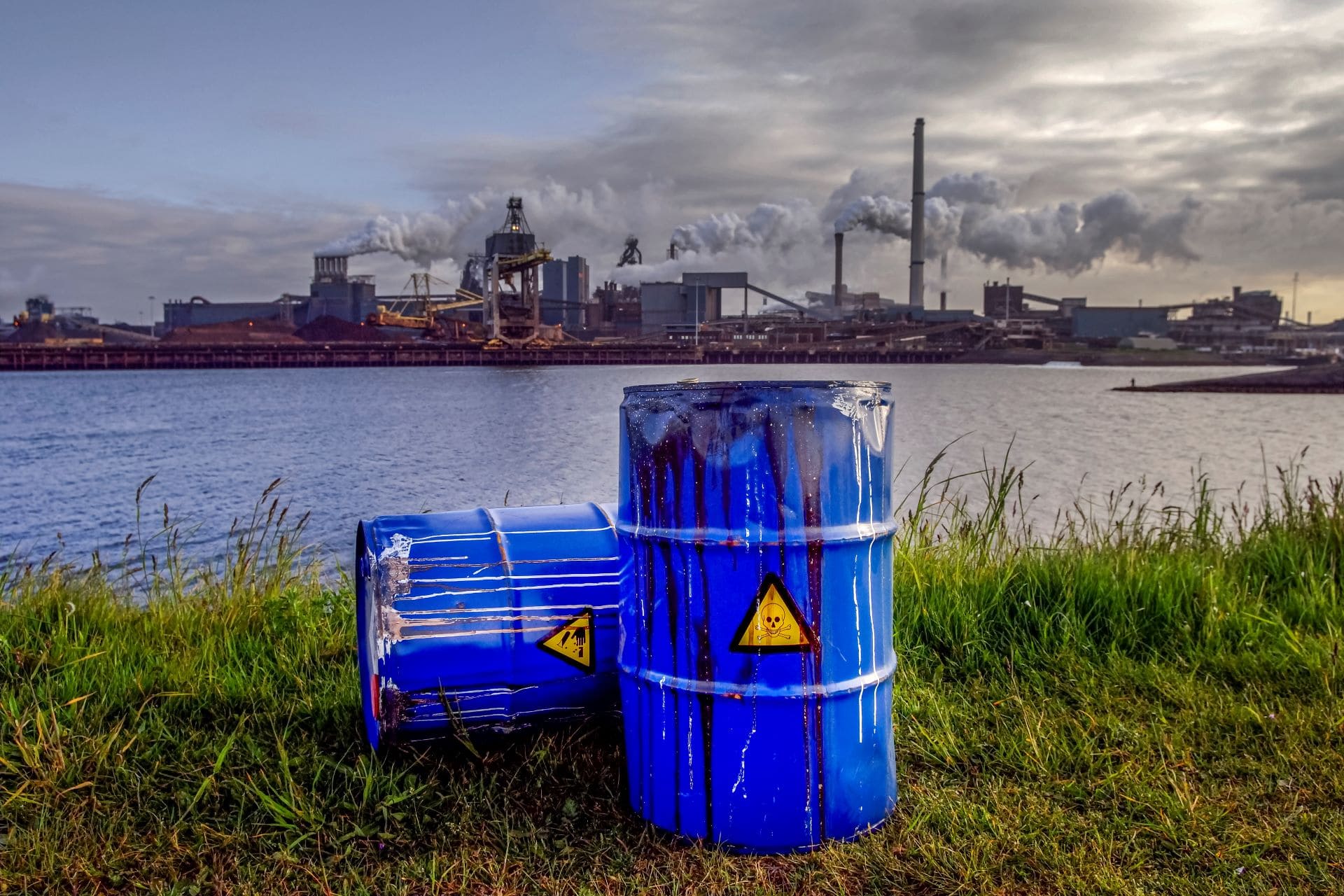The Chemical Safety Board’s (CSB) Accidental Release Reporting Rule became effective March 23, 2020, just as the COVID-19 pandemic was beginning. Due to the rule’s timing, the reporting requirement may have gone unnoticed and not been integrated into companies’ release reporting protocols.
The rule only applies to a narrow set of chemical releases. Unlike most Environmental Protection Agency (EPA) accidental release reporting rules, this rule is not triggered by a release of certain regulated chemicals or a release above a certain quantity of a chemical. Rather, the standard for reporting is the impact of the chemical release on people and property.
The Chemical Safety Board
The CSB is an independent federal agency responsible for investigating serious chemical incidents and conducting root-cause investigations of chemical accidents at fixed industrial facilities. While the CSB cannot issue citations or levy fines, the agency makes safety recommendations to manufacturers, industry organizations, and labor groups, and reports to regulatory agencies that can take enforcement actions like the Occupational Safety and Health Administration (OSHA) and the EPA. When facilities fail to report covered accidental releases or otherwise violate the rule, the CSB will typically contact owners and operators it believes have failed to file a required report before making a referral to an enforcing agency.
A grace period is typically granted if the owner or operator files a report with the CSB immediately after notification. This grace period is not applied when an owner or operator intentionally fails to report to the CSB.
Development of the Rule
U.S. law provides that the CSB “shall establish by regulation[,] requirements binding on persons for reporting accidental releases into the ambient air subject to the Board’s investigative jurisdiction.” However, for the first 20 years of the CSB’s operations, such a rule was never established. On Feb. 21, 2020, the Accidental Release Reporting Rule 40 C.F.R. § 1604.1 et seq. was published in the Federal Register and went into effect on March 23, 2020. The rule fulfills the CSB’s statutory mandate and satisfies a 2019 court order that was related to the CSB’s failure to promulgate a regulation See Air Alliance of Houston, et al. v. U.S. Chemical Safety and Hazard Investigation Board, 365 F. Supp. 3d 118 (D.D.C. Feb. 4, 2019).
The rule describes when an owner or operator is required to file a report of an accidental release and lists the required content of such a report. Former CSB Interim Executive Dr. Kristen Kulinowski said at the time, “The CSB anticipates that these reports will provide the agency with key information important to the CSB in making prompt deployment decisions.”
When the Accidental Release Reporting Rule Applies
The rule applies to owners and operators of stationary sources, which are defined as “any buildings, structures, equipment, installations, or substance-emitting stationary activities which belong to the same industrial group, which are located on one or more contiguous properties, which are under the control of the same person (or persons under common control), and from which an accidental release may occur.”
Reporting is required whenever there is an accidental release that causes serious injury, death, or substantial property damage even if the substance may not have been considered hazardous in the past.
A qualified event or accidental release is an unanticipated release of a substance (regulated or extremely hazardous) into the ambient air. The terms are defined as follows:
- Ambient air is broadly defined as “any portion of atmosphere inside or outside a stationary source”
- Serious injury is that which “results in death or inpatient hospitalization”
- Substantial damage means estimated damage to or destruction of property of $1 million or more
- Extremely hazardous substance means “any substance which may cause death, serious injury, or substantial property damage, including but not limited to any ‘regulated substance’ at or below any threshold quantity set by the EPA Administrator under 42 U.S.C. § 7412(r)(5).”
Satisfying the Accidental Release Reporting Rule
The rule contains two major requirements for satisfying its reporting criteria.
First, if the owner or operator has reported the release to the EPA’s National Response Center (NRC) pursuant to U.S. Code, the CSB reporting requirement may be satisfied by submitting the NRC identification number to the CSB within 30 minutes of notifying the NRC.
Second, if the owner or operator has not notified the NRC, they must submit a report directly to the CSB within eight hours of the accidental release and must include the information listed in 40 C.F.R. § 1604.4. The information that must be reported under the CSB report is similar to what must be reported to the NRC following the release of a reportable quantity of CERCLA hazardous substance. The report can be made using a form provided by the CSB.
If multiple owners/operators are responsible for the same release, they can all fulfill their reporting requirements through a consolidated report. Owners and operators may agree to this efficient, consolidated strategy in advance or at the time of an accident.
After the initial report is submitted, the report may be revised or updated within 30 days without penalty. A report may be updated within an additional 60 days (90 days total from the initial report) with an explanation as to why the changes could not have been submitted in the first 30-day period. 40 C.F.R. § 1604.3(e). These updates and revisions are designed to help correct unintentionally inaccurate information that may have been initially submitted.
2022 Guidance From CSB
In August 2022, the CSB released guidance to “help owners and operators of stationary sources and other stakeholders understand and comply with the CSB’s Accidental Release Reporting Rule outlining these criteria.
Timing
The 2022 guidance expounds on the timing requirements of the rule. One example the guidance addressed was a hypothetical scenario in which eight hours have elapsed before an owner/operator was aware of an accidental release. The guidance suggests that the rule’s reporting requirements may still be met so long as “the owner or operator [acts] in good faith and promptly report[s] the accidental release upon discovery with an explanation about why the report has been filed late.”
The guidance also clarifies when the rule would not apply and when it would, at a later date, be triggered. If, during the eight-hour window after an accidental release, there is no triggering injury or property damage, then no reporting requirement will have arisen. However, if the owner/operator is made aware of a triggering injury or property damage value after the eight-hour window “the owner/operator must report immediately upon learning of the new circumstance.”
Planned Releases
Reporting requirements may arise even after planned releases. An example the guidance provides is “permitted flaring.” Even though such releases have an acknowledged risk of injury to workers, injuries are always “accidental” in nature. For this reason, a planned release that does result in injury is categorized as an accidental release and reporting is required by the rule.
Broad, Contextual Scope of ‘Extremely Hazardous Substance’
According to the CSB guidance, even “[a]n accidental release of water or air could meet the criteria of an extremely hazardous substance.” One example would be an accidental release of high-temperature steam that causes serious injury to an individual. Additionally, a substance that is hazardous in context, such as one that becomes hazardous once combined with another substance, can be considered “extremely hazardous.”
While the rule governs releases into ambient air, it also can be triggered by the release of liquid, solid, and gas state materials. The guidance gives combustible dust as one example of a solid capable of property damage or injury that may trigger the reporting requirement.
‘When Unsure, An Owner/Operator Should Report’
The guidance explains that whenever owners or operators are uncertain whether a report should be made, they should err on the side of caution and report. The CSB estimates that a report can be completed in less than 10 minutes. According to the CSB, from April 2020 to July 2022, 162 reports of accidental release events were made to the agency.
Additionally, the guidance reminds owners/operators that “there is no sanction or enforcement action associated with reporting an accidental release, which in retrospect, did not have to be reported.”
Integration Into Reporting Protocols
When an accident occurs, no owner or operator wants the additional challenge of figuring out what its immediate reporting requirements are. Established protocols create certainty for an unplanned day. Fixed industrial facilities with plans in place are more likely to mitigate their accidents and avoid fines or sanctions for non-reporting. All owners and operators of fixed industrial facilities should consider integrating the CSB Rule into their reporting protocols.
For more information, please contact the Barnes & Thornburg attorney with whom you work or Paul Drucker at 317-231-7710 or paul.drucker@btlaw.com or Kathleen Waak at 317-231-6402 or kathleen.waak@btlaw.com. This legal insight was co-authored by summer associate Blake Welter.














